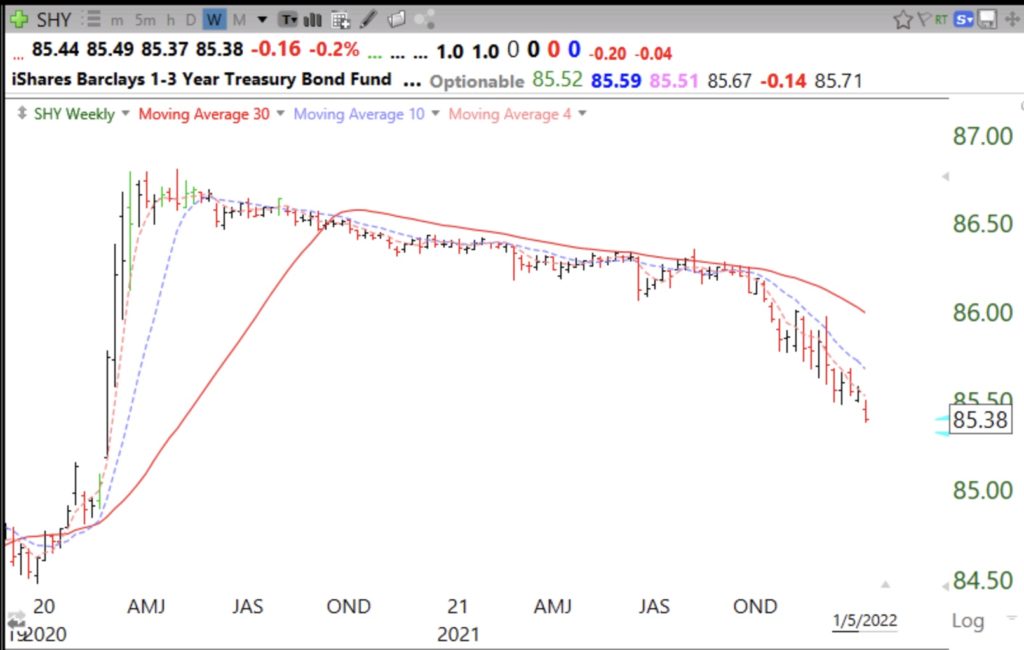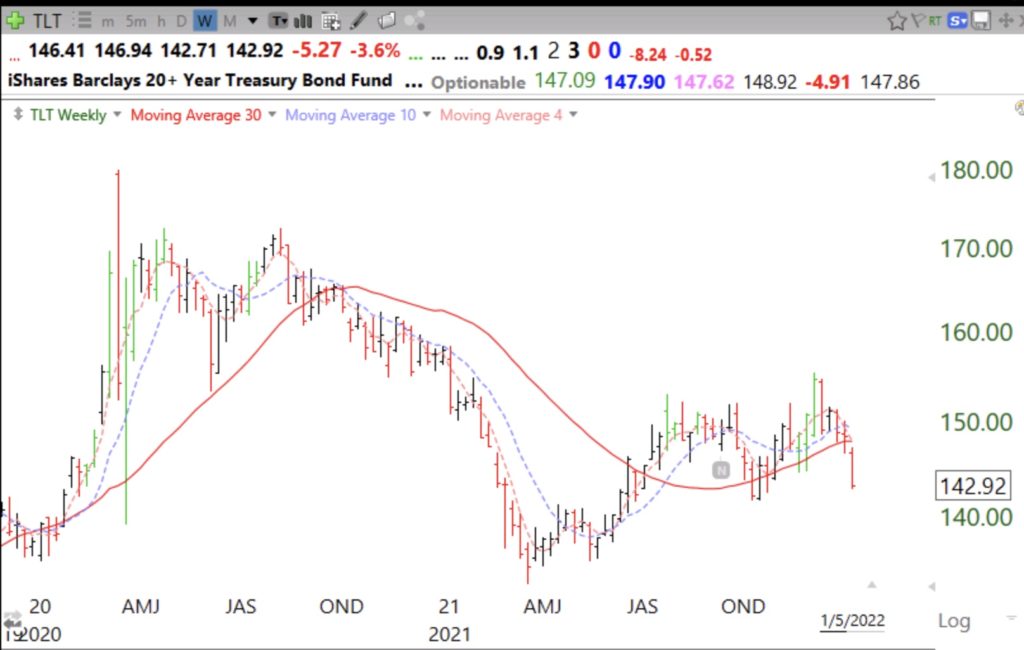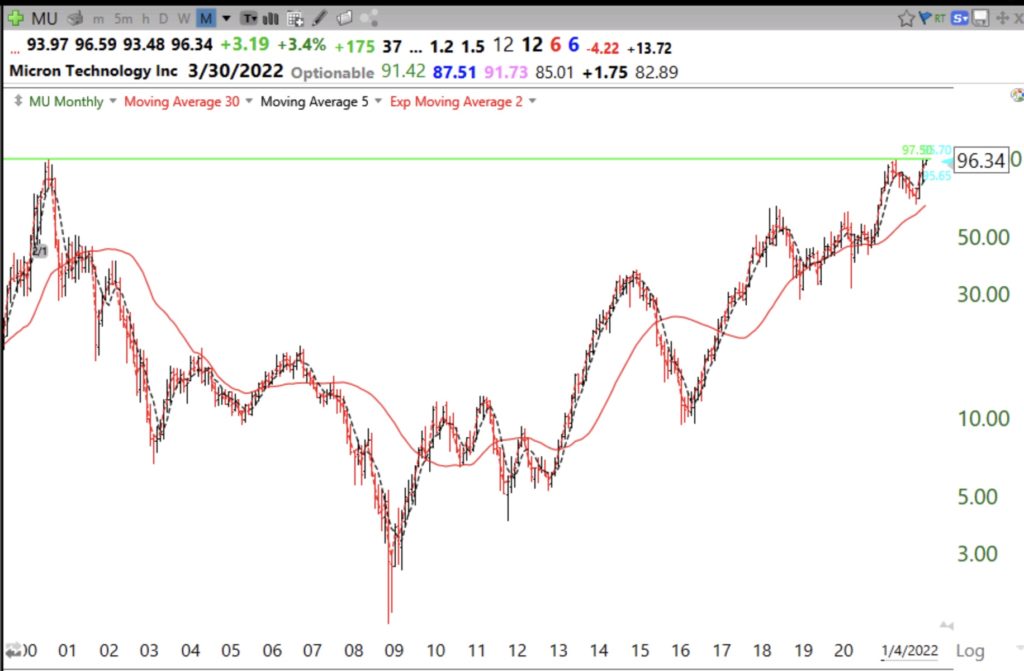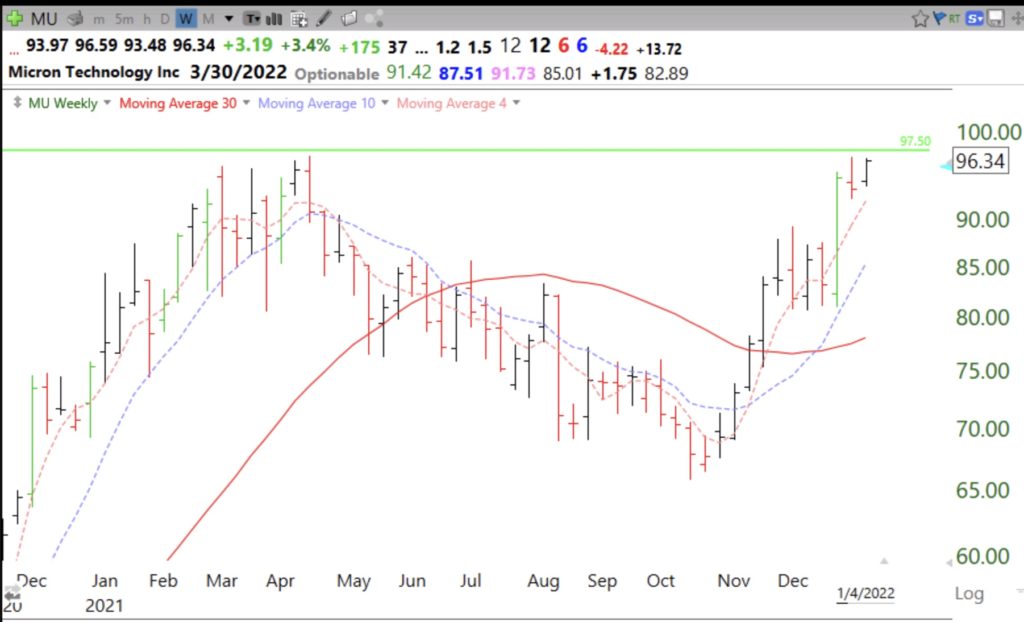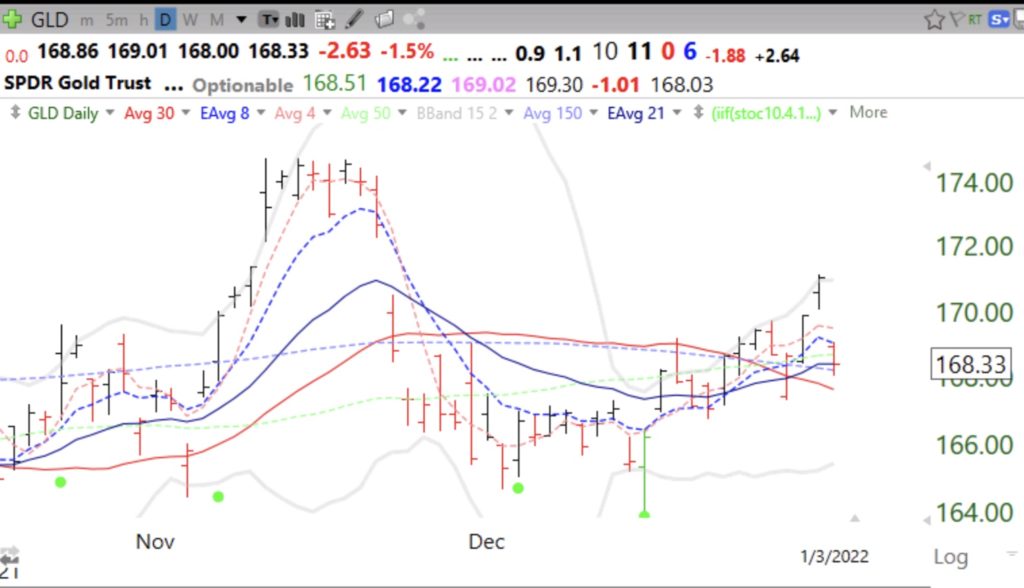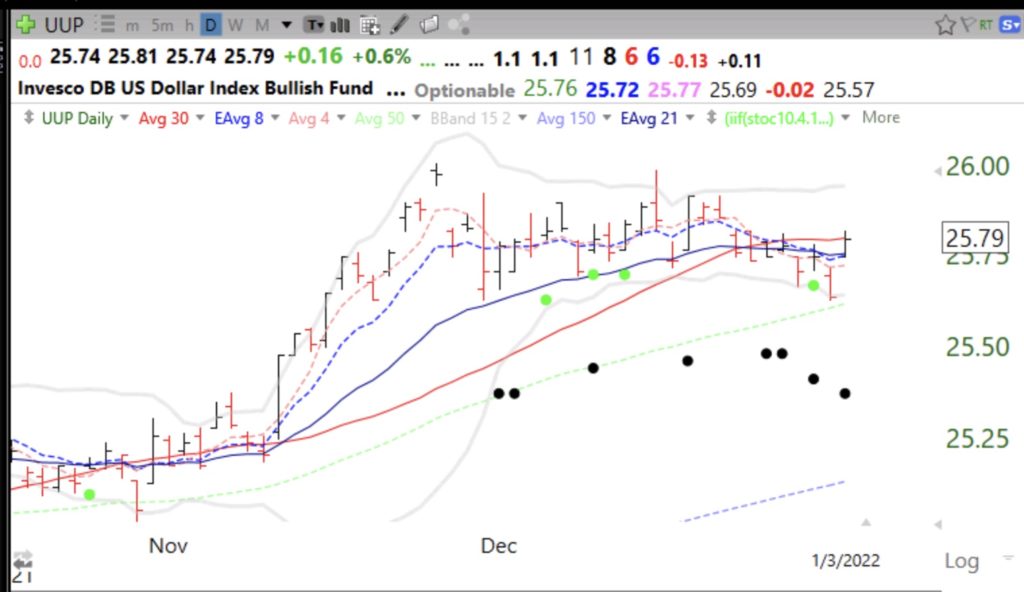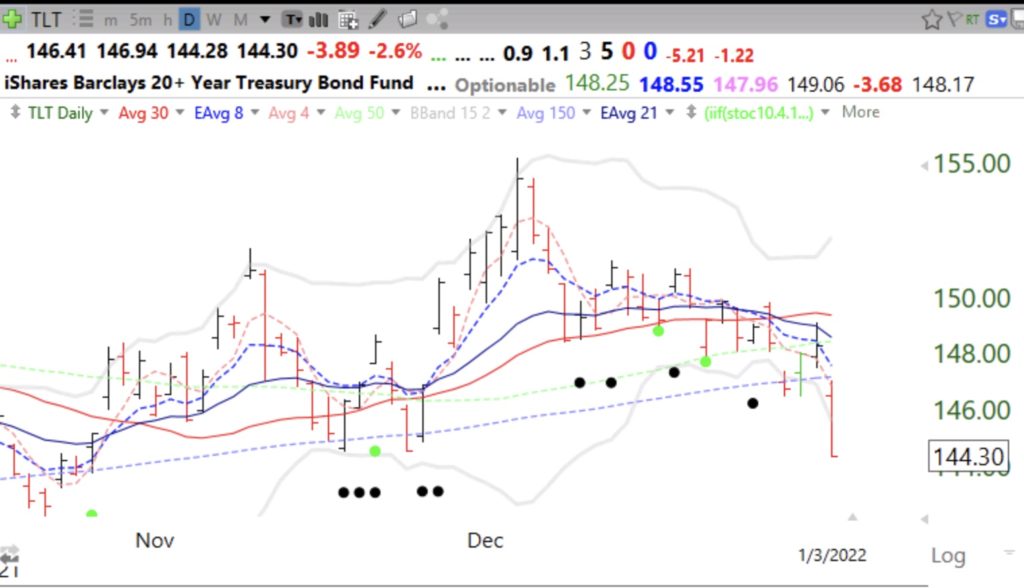I had felt that when the Fed announced it was tapering and raising rates, it did not make sense for me to be long stocks. Most break-outs have failed. So I have been mainly in cash in my trading accounts. I own some SQQQ. I have also been reducing exposure in my university retirement accounts. I suspect that rising interest rates will eventually kill the bull. It always has in my experience. Never fight the Fed. Look at the short term treasury bonds, SHY. See a trend? Stage IV down-trend. Remember, lower treasury bond prices=higher interest rates.
Longer bonds are also starting to decline.
